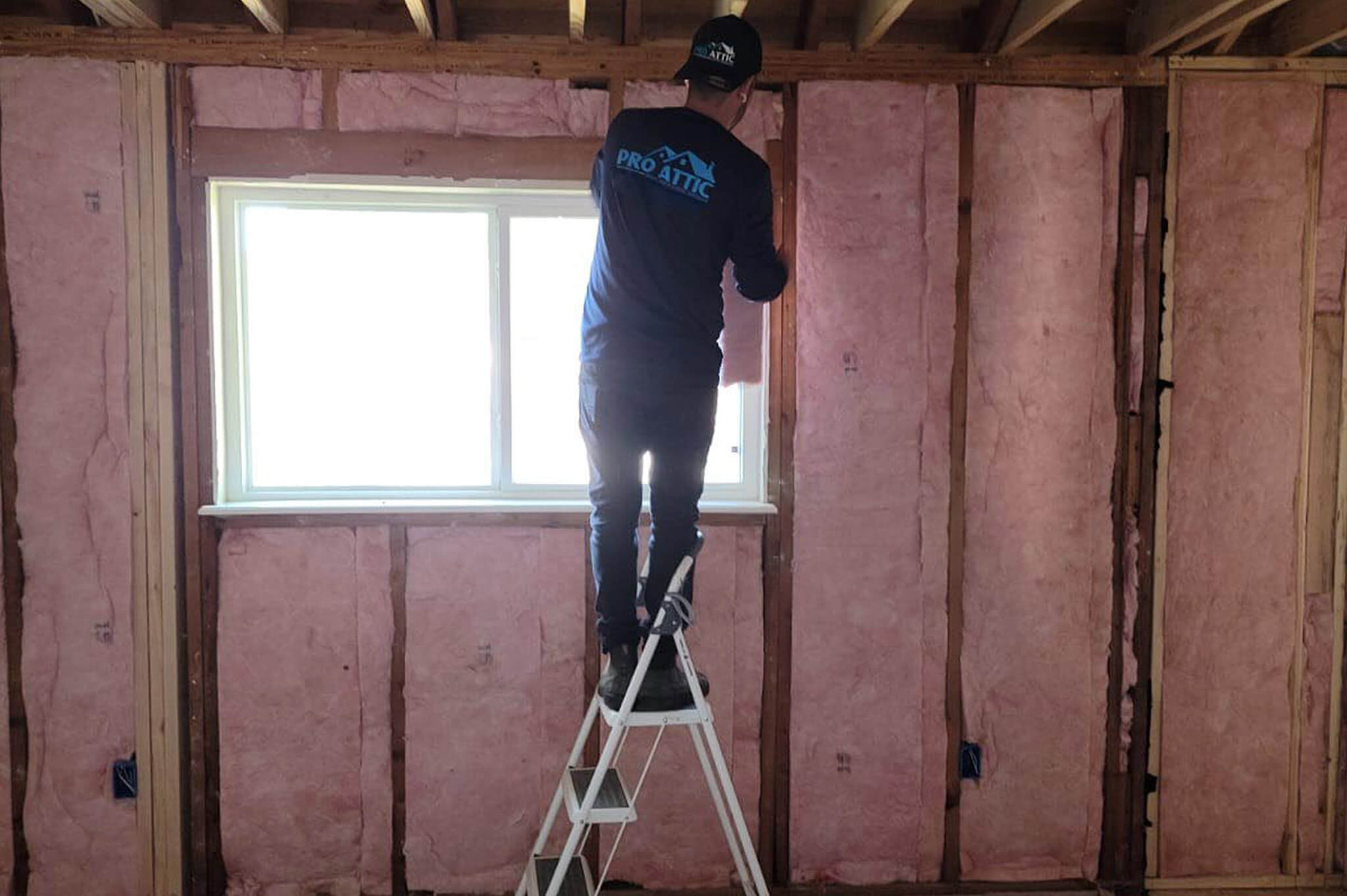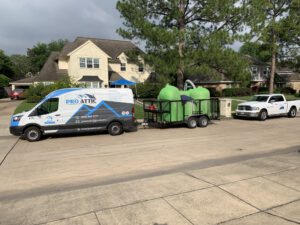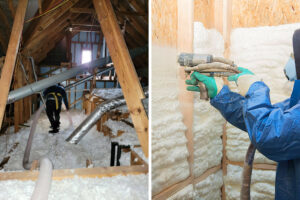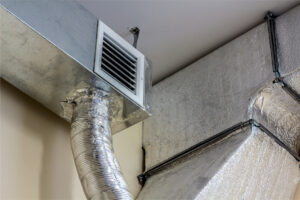Table of Contents
Insulation often takes center stage in making our homes more energy-efficient and comfortable. While the benefits of proper insulation cannot be overstated—ranging from reduced energy bills to a consistent internal temperature—there’s a lesser-known side to this home improvement strategy.
We find ourselves asking, “Can you over-insulate a house?” At Pro Attic, your Houston insulation experts, we’re here to guide you through the nuances of home insulation to ensure your efforts lead to comfort, not complications.
Understanding Insulation and Its Importance
Insulation serves as a barrier to heat flow, making it one of the most efficient ways to improve a home’s energy efficiency. It keeps warm air out during the hot months, and traps heat inside during the cooler months, significantly reducing the need for heating and cooling. This makes your home more comfortable throughout the year and reduces your energy bills and carbon footprint.
The importance of insulation extends beyond immediate comfort and economy. Properly insulated homes have a smaller environmental impact due to decreased energy consumption. Additionally, insulation contributes to a home’s overall health by preventing excessive moisture buildup, which can lead to mold and mildew problems. By grasping the importance of insulation, homeowners can make informed choices on effectively enhancing their home’s efficiency and comfort.
The Perils of Over-Insulation
Trapped Moisture and Mold Growth
One of the most significant risks of over-insulating your home revolves around moisture control. Insulation is designed to trap heat, but it can also trap moisture when overdone. This section will discuss how excessive insulation can lead to mold and mildew problems, affecting your home’s structure and air quality.
Diminished Returns on Energy Savings
While the principle of “more insulation equals more savings” might seem logical, there’s a point where additional insulation no longer contributes to energy efficiency. This part will break down the concept of diminishing returns in the context of insulation, explaining why more isn’t always better.
Overworking Your HVAC System
A home that’s too well-insulated can disrupt the balance that HVAC systems rely on to function effectively. Here, we’ll discuss how over-insulation can lead to an overworked HVAC system, potentially resulting in increased energy usage and a shortened lifespan of your heating and cooling units.
Signs You Might Be Over-Insulating Your House
Identifying when your home might be suffering from over-insulation is crucial in maintaining its health and efficiency. Here are a few signs that could indicate your house is over-insulated:
- High humidity levels within the house
- Unexplained mold or mildew growth in various areas
- A consistent musty odor, especially in insulated areas
- Difficulty in maintaining consistent temperatures
- Noticeably dry indoor air during winter
- The HVAC system running more frequently than seems necessary
- Unusually high energy bills despite efficient heating and cooling practices
Being aware of these signs can help you take early action to address potential over-insulation and maintain the health of your home.
How Much Insulation Is Just Right?
Determining the right amount of insulation for homes in Houston involves a fine balance, considering our city’s unique climate challenges. In Houston’s hot and humid environment, the goal is not just to insulate but to do so in a way that balances indoor comfort with moisture control. The Department of Energy (DOE) recommends specific R-values—a measure of insulation’s ability to resist heat flow—for different areas of a house. For Houston homes, an R-value of R-30 to R-60 is advisable for attics, R-13 to R-15 for wall cavities, and R-25 to R-30 for floors.
Over-insulating beyond these recommendations can lead to the issues discussed earlier, such as trapped moisture and an overburdened HVAC system. It’s important to note that the effectiveness of insulation is not just about thickness but also about the right type for Houston’s climate, such as fiberglass, cellulose, or spray foam, and its proper installation.
At Pro Attic, we understand that every home is unique, and we’re here to provide personalized advice to ensure your insulation enhances your home’s energy efficiency and comfort without crossing into the territory of being counterproductive. Our expertise in Houston’s climate means we can guide you to make the right decisions about the types and amounts of insulation that will serve you best, leaving your home comfortable, efficient, and free of moisture and mold risks.
Striking the Right Balance: How to Insulate Correctly
Knowing the potential pitfalls of over-insulation begs the question—how does one insulate a house correctly? Here are the steps to ensure your home is insulated correctly, providing maximum comfort and efficiency without the risks associated with over-insulation:
- Conduct a Professional Energy Audit: The first step towards proper insulation is understanding your home’s energy efficiency. An energy audit by a professional can reveal areas of heat loss and suggest the most effective insulation techniques tailored to your home’s needs.
- Understand Regional Insulation Recommendations: Insulation needs vary by climate. Familiarize yourself with the recommended insulation levels for your area. The Department of Energy provides guidelines based on zip codes, which can serve as a useful starting point.
- Choose the Right Insulation Material: Not all insulation materials are created equal. Different materials may be more effective depending on the part of your house you’re insulating (attic, walls, floors). Options range from fiberglass and cellulose to spray foam and rigid foam boards. Each has its own R-value (a measure of thermal resistance), which should match your local recommendations.
- Ventilation Is Key: Proper ventilation works hand-in-hand with insulation to regulate your home’s temperature and moisture levels. Ensure that attic vents and other natural ventilation systems are unblocked and operational to prevent moisture buildup and maintain air quality.
- Seal Air Leaks: Before adding insulation, seal any air leaks around doors, windows, and utility cutouts. This step is crucial to prevent warm or cool air escaping, ensuring your insulation works effectively.
- Consult with Insulation Professionals: Although DIY projects can be tempting, professional insulation contractors have the expertise to install insulation correctly. They can also provide insights into your situation’s best materials and methods.
- Regularly Review and Maintain Insulation: Insulation isn’t a set-it-and-forget-it solution. Routine inspections, particularly following severe weather occurrences, can pinpoint necessary repairs or modifications to uphold peak insulation efficiency.
By following these steps, you can strike the right balance in insulating your home—enhancing comfort, efficiency, and overall home health without falling into the trap of over-insulation.
Why Consult with Pro Attic?
Consulting with Pro Attic for your insulation needs offers numerous advantages, from expertise in the latest insulation technologies to personalized solutions tailored to your home’s unique requirements. The team at Pro Attic brings a wealth of knowledge and experience in improving home insulation, ensuring that every project is approached with an eye for detail and a commitment to energy efficiency.
By choosing Pro Attic, homeowners benefit from comprehensive energy audits that identify not just insulation gaps but also potential air leaks and moisture problems that could undermine the home’s comfort and air quality. Furthermore, Pro Attic’s professionals are adept at navigating the intricate balance between insulation and ventilation, ensuring homes are neither over nor under-insulated. This meticulous approach translates into optimized energy usage, lower utility bills, and a significantly reduced environmental footprint.
With Pro Attic, homeowners are not just hiring an insulation service; they are partnering with experts dedicated to enhancing the livability and sustainability of their homes.
FAQ: Your Questions About Home Insulation Answered
Can too much insulation in my attic cause problems?
Absolutely. While it’s crucial to have adequate insulation for energy efficiency, too much insulation can lead to diminished returns. Excessive attic insulation can trap moisture, leading to potential mold growth and wood rot. It’s about finding the right balance to ensure your home maintains a consistent temperature without compromising the structure.
Is spray foam insulation better than traditional options for attic insulation?
Spray foam insulation offers several advantages, including superior air sealing and thermal performance. It can efficiently seal cracks and gaps, halting the infiltration of cold air and the leakage of warm air. This makes it a highly efficient option for attics, contributing to a more comfortable living space and potentially lower cooling and heating costs.
Should I consider insulating my interior walls?
Insulating interior walls can enhance soundproofing and improve thermal performance, creating a more consistent temperature throughout your home. While it’s not always standard practice, it can be particularly beneficial in homes with rooms that have different heating or cooling needs or in multi-family dwellings where noise reduction is desired.
How does fiberglass insulation compare to blow-in insulation for walls?
Fiberglass insulation, typically found in batts or rolls, is a common choice for wall insulation due to its ease of installation and cost-effectiveness. Blow-in insulation, on the other hand, offers a more seamless coverage, filling in hard-to-reach areas and air gaps in the wall cavity. Both have their merits, with the choice often coming down to the specific needs of the project and the structure of the walls.
Why is it important to have proper insulation in a cold climate?
Proper insulation is key to keeping heated air inside your living space in cold climates, reducing the need for excessive heating and lowering energy costs. It also helps minimize the risk of ice dams on the roof, which can cause significant damage. Good insulation ensures a warmer, more energy-efficient home with a lower environmental impact by reducing greenhouse gas emissions.

